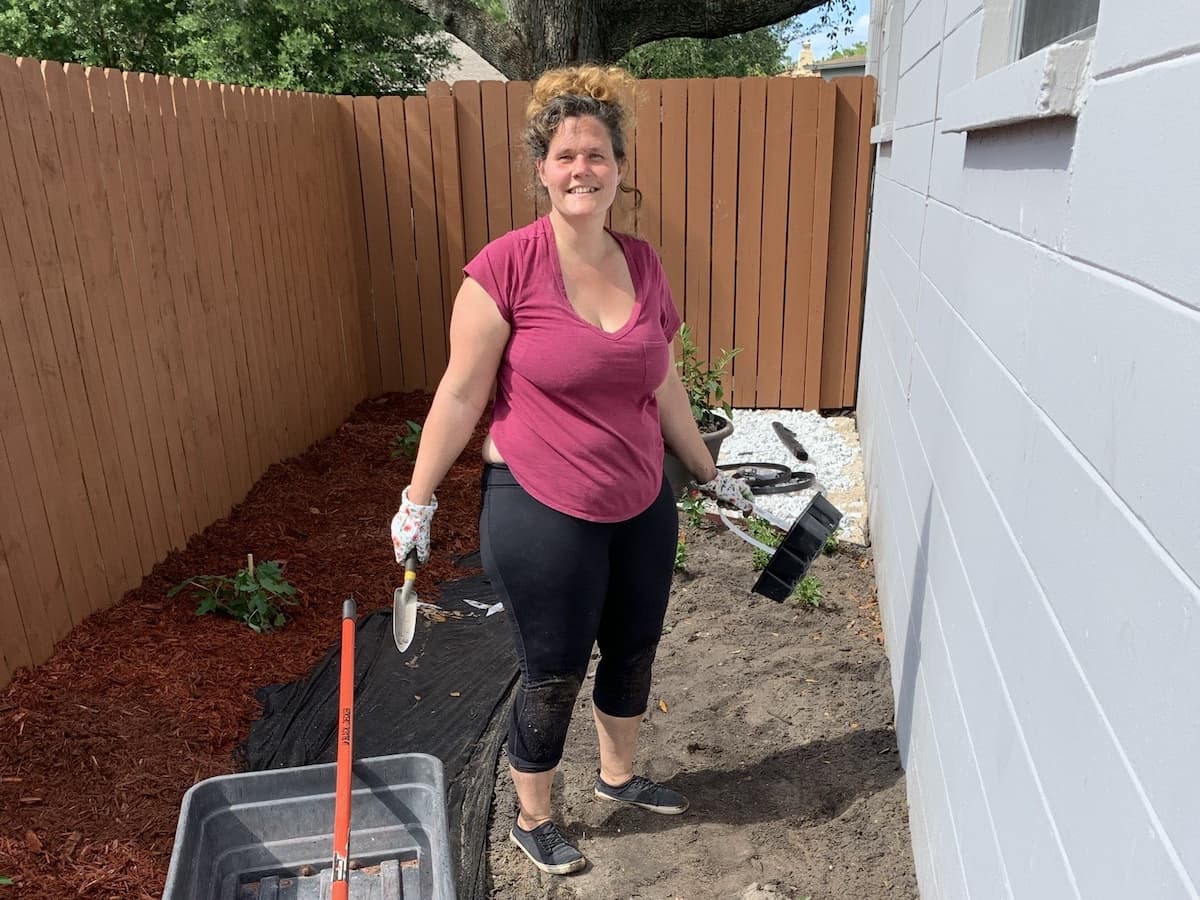Have you been thinking about turning your yard into a garden? My wife and I have done a bit of this.
It’s actually a more popular concept than you may think!
Reducing your lawn area by turning your grassy spaces into gardens may take some (a lot of) sweat. But the benefits of doing this are incalculable.
Imagine how much time and money you could save if you had less lawn to irrigate and mow. And not even just that… Having less grass is better for the environment, too!
Turning your lawn into a garden can:
- Better support pollinators and other beneficial creatures
- Help prevent erosion and water runoff
- Reduce the need for fertilizer and pesticides
- Cut back on carbon emissions
That last point surprised me when I found out about the negative effects lawns have on carbon output. According to the Pennsylvania Horticultural Society, lawns produce four times more carbon than they absorb. The staggering net imbalance can be caused by fuel used for mowing and production of chemicals dumped on a typical yard. There’s also the sheer difference in how grasses metabolize carbon versus other plants.
This is really very sobering information, especially for those who want to maximize their home’s environmental friendliness. Some people remove their entire lawn, converting it into a meadow or a jungle of native plants.
My wife and I didn’t really want to go quite to that point. We like having yard space for family gatherings. We also enjoy the aesthetics of a green lawn in front of our home. But we wanted to do something to make our landscape more environmentally friendly while reducing mowing times, cutting back on water consumption, and making our yard a better place for pollinators.
Removing The Grass Wasn’t Easy
When we bought our house, it was essentially situated on about a quarter acre of grass. Oh, and there were two trees. But that was about it. We had a lot of work to do in turning our bland landscape into our personal outdoor oasis. One of the things we wanted to do from the get-go was turn swaths of yard into planting beds. And it wasn’t easy getting rid of the grass we wanted gone.
We weren’t going to use commercial herbicides to kill the grass. And natural solutions like vinegar weren’t quite strong enough to put the kibosh on the thick — and very healthy — lawn.
Some folks place layers of cardboard or newspaper over the areas of grass they want to kill. They may apply mulch or compost on top of it, and then wait. And wait. And wait some more for time and mother nature to smother the grass underneath to oblivion. We weren’t going to wait for that.
Taking shovel to dirt, we began removing the grass. We dug as deep as eight inches to remove the rhizomes, stolons, runners, and roots our grass sent down and out into the soil. We completed many of these projects across our yard over the first few months we lived in our home.
But one area was left virtually untouched. It was a strip of lawn about 10 feet wide and 25 feet long along one side of our home.
Photos: Turning Our Yard Into A Garden
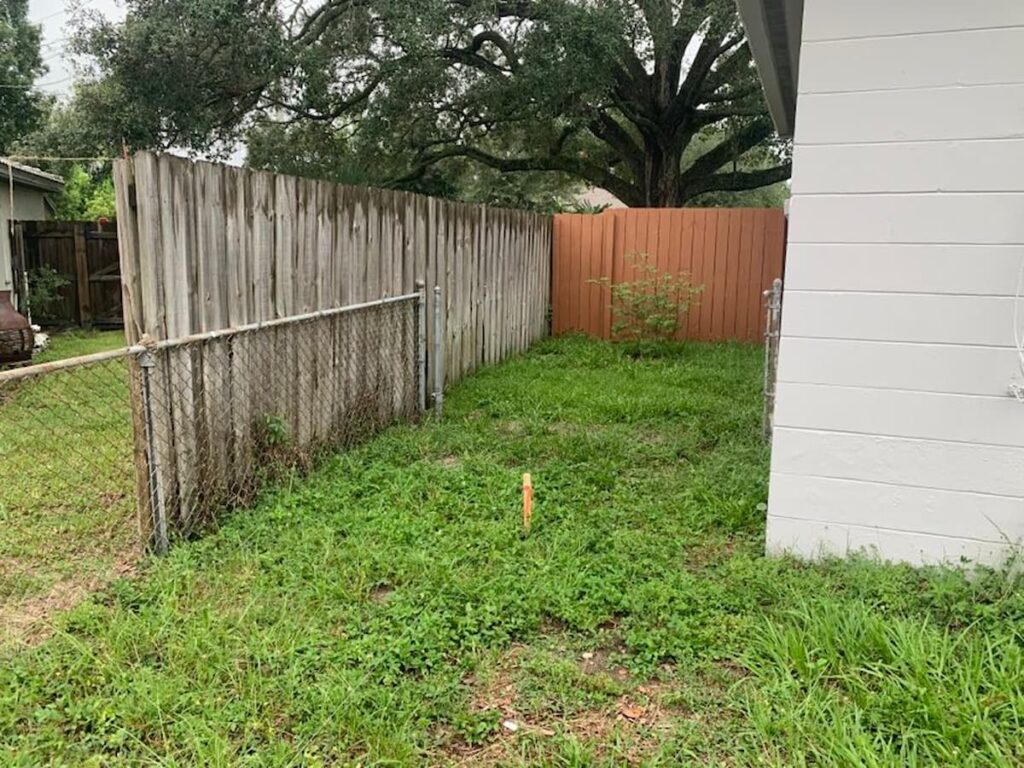
That big plant near the fence in the back was a crepe myrtle that we planted right after we bought the house. But we determined that it wasn’t a good spot for it in the long run. So, we donated it to a family member and started redoing this area of the yard from scratch.
We scraped that patch of yard to the soil, removing roots, weeds, and even some debris that had been there since probably years before we bought the place. We also built a new section of fence to define the new garden space.
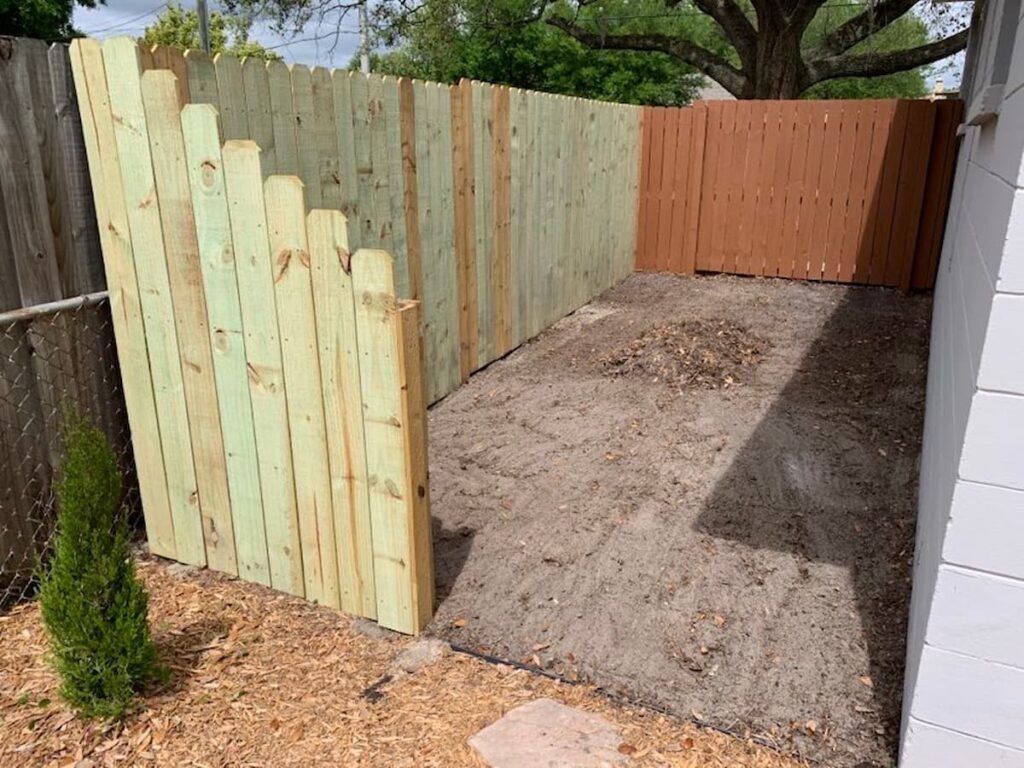
Our plans for this garden included a place for fruit trees, pollinator plants, and a little sitting area. Tying this all together would be a footpath made from stone-shaped garden pavers. The paver path continued onward from a path we created through an adjacent area of yard we previously converted into garden space.
What do you think? Turning our yard into a garden has worked out well on such a relatively narrow strip of real estate!
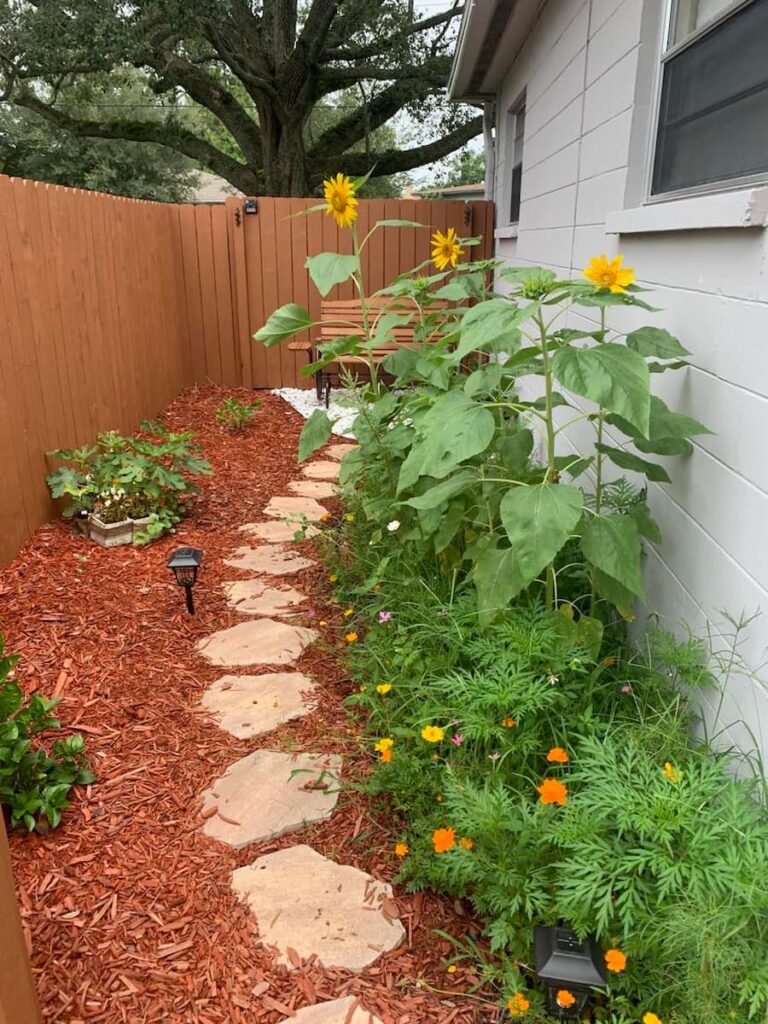
A Never-Ending Project?
My wife and I don’t think gardening is a one-and-done thing. Every growing season brings new challenges, new opportunities, and new inspirations. As our little side-yard garden has grown in the years since we “completed” it, we’ve made changes. New plants in the pollinator garden. A table and chairs instead of a bench in the sitting area. A couple of new plants in the fruit tree grove.
We also decided we wanted to define that garden space even more. It is, after all, tucked away on the side of the house, away from the rest of the backyard. We felt it needed a transitional element that ties the spaces together yet defines that nook as its own area. So, we built an arbor as a gateway between the side-yard garden and the remainder of the backyard landscape.

We built the arbor for around $65 in 2024, and it’s totally made the difference in how this garden area looks and feels. And guess what? A passionflower vine has almost taken over the arbor, giving the side garden a glorious entry point. It’s also helped our nearby butterfly garden quite a bit. Quite a few very hungry caterpillars live on the passionflower vine, and they will soon turn into beautiful butterflies.

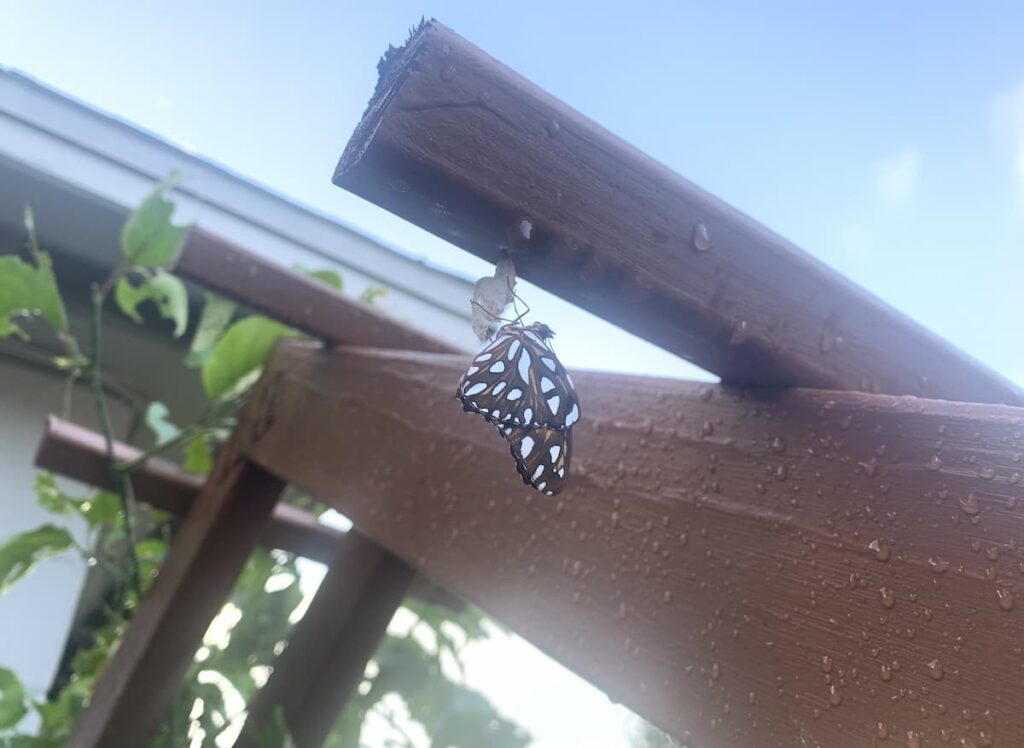
What’s next for our garden? Don’t ask me! I don’t even know yet…
But I can tell you this: we’re not done!
We love the transformations we’ve seen around our home as we turn lawn space into gardens. It’s saved us time behind the mower. It’s dramatically reduced irrigation needs. And we see these gardens around our home teeming with color and life we wouldn’t necessarily enjoy if they had been left as lawn. That makes all the work of turning our yard into garden areas well worth it!
